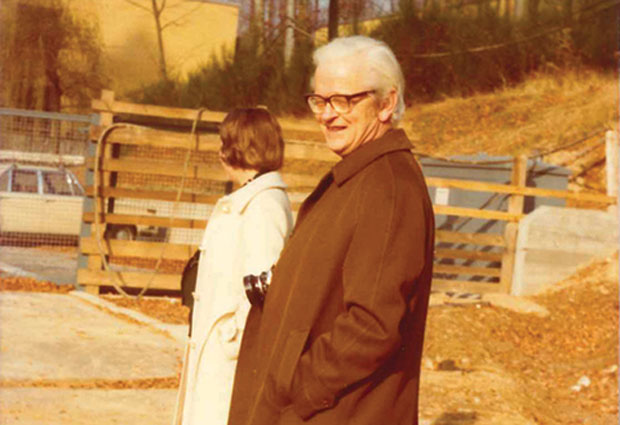
Molecular biology as a force for peace
Historian Soraya de Chadarevian explores how EMBL’s first Director General shaped molecular biology

After World War II, Sir John Kendrew, EMBL’s first Director General, advocated for molecular biology as a new field. In doing so, he aspired to promote international collaboration as a tool for peace. In this interview, Soraya de Chadarevian, a science historian at UCLA, who recently spoke at a special EMBL conference celebrating Sir John Kendrew’s 100th anniversary, reflects on how the field of molecular biology emerged in the post-WWII period – driven in part by Kendrew’s powerful blend of vision and action.
In your work on the history of biomedical sciences, you focus mainly on the period during and after WWII. What is it about molecular biology during that time period that interests you?
I think it is important to look at the generation of researchers who graduated just before or during the war and then joined the war effort, particularly in the UK and the US. They enrolled in big interdisciplinary projects in radar, atomic research, and operational research. In contrast to academic research, war research was mission oriented and researchers were in constant contact with military, industry, and government representatives. This experience reshaped the outlook on how science could be effectively done. After the war, when many scientists returned to academia, their attitude to research had profoundly changed. Many changed fields and attacked new problems that seemed more meaningful than the projects they pursued before the war. This was true for Kendrew who moved from research on reaction kinetics to studying the molecular structure of proteins that were seen to hold the key to many life processes. In addition, research budgets significantly increased in the postwar era, creating a climate in which the field of molecular biology could flourish.
Biophysics, the ‘physics of life,’ played an important function to counterbalance the ‘physics of death’ that had led to the atomic bomb
At the beginning of your book, Designs for Life, you mention that most science historians see World War II as an impediment to the development of molecular biology. How do you see the war, instead, as a catalyst for scientific development?
While the war was an interruption of certain things, it accelerated others. The amount of funding that went into science during WWII was unusually high and it pushed certain projects ahead. People working on proteins, for instance, could continue their research during the war because the government was looking for alternative food sources and so research into the structure of proteins was considered to be useful.
During the war, significant amounts of money had been channelled into military research. This continued to be the case after the war. However, it also became important for governments and funding agencies to show that science could help the peace effort. Biophysics, the ‘physics of life,’ played an important function to counterbalance the ‘physics of death’ that had led to the atomic bomb. Later, parts of what was considered biophysics became integrated into the field of molecular biology.
How did John Kendrew function as a ‘political broker’ for molecular biology?
Kendrew used his position as a member of various committees, including the UK Council for Scientific Policy on which he served from 1964-1972, to argue for a European laboratory and, more generally, for the importance of promoting molecular approaches in biology in university and school curricula. Biochemists weren’t so happy with this idea, as they thought they had been doing molecular research all along! Although the definition of molecular biology remained a contentious issue, Kendrew became instrumental in defining it as an independent subject.

Kendrew also founded the Journal of Molecular Biology, which was important to make the field mainstream. In addition, by publishing certain studies and excluding others, the journal became a tool for defining exactly what molecular biology was.
What were Kendrew’s reasons for founding EMBL in 1974?
The idea was to found a central laboratory for molecular biology on the model of CERN, the European organization for nuclear research. It was a way to promote research in the new field of molecular biology. But Kendrew was also concerned about the scientific ‘brain drain’ from the UK and the rest of Europe to the US, where research expanded massively during the cold war. A central European laboratory, where resources could be pooled, was seen as a useful counterbalance. Some of Kendrew’s own colleagues were concerned that a central laboratory would drain resources from national laboratories. But Kendrew was a convinced European and believed strongly in the idea of a European laboratory. Although EMBL is not an EU project, it is most definitely a European project.
How has Kendrew influenced your work?
I only met him very late in his life but he was very supportive of my historical inquiry and the fact that his papers were already deposited in the Bodleian Library in Oxford and fully catalogued was extremely helpful. Also, through our conversations he helped me see just how important it was to look at scientists’ work in the war in order to understand the post-war period. For all these reasons, he had a big impact on my work.


